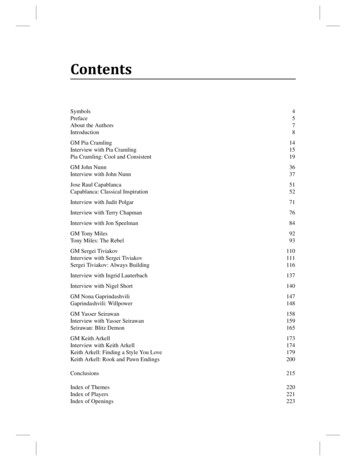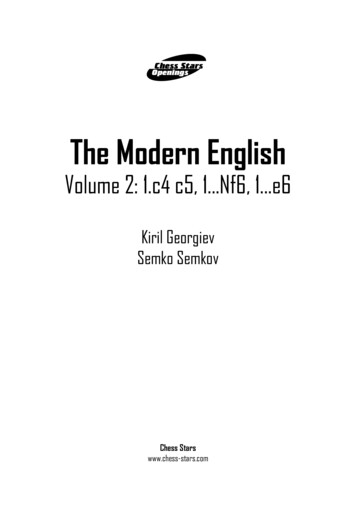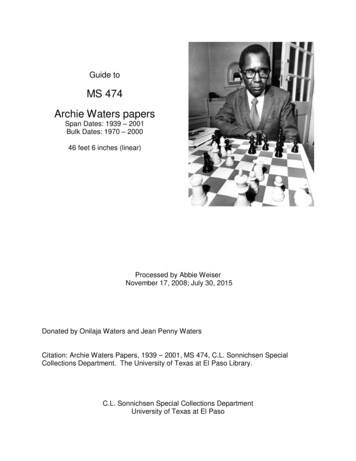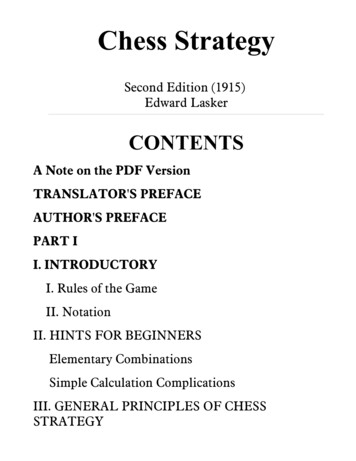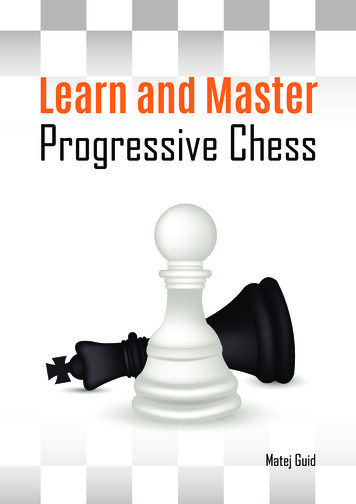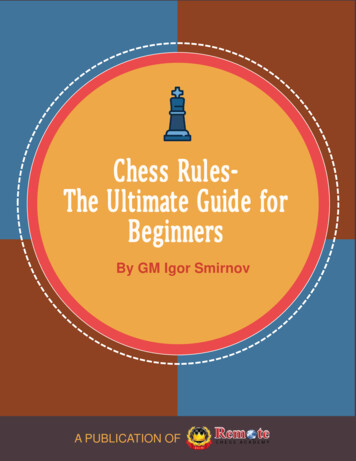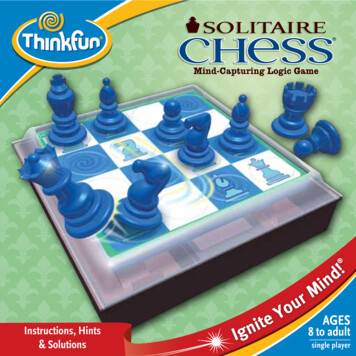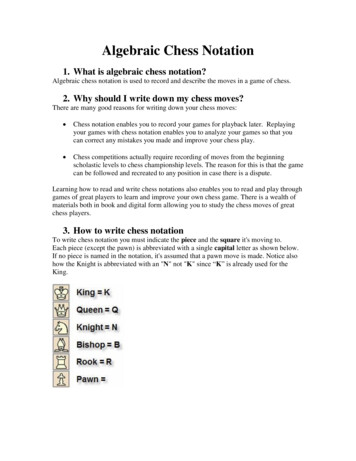
Transcription
Algebraic Chess Notation1. What is algebraic chess notation?Algebraic chess notation is used to record and describe the moves in a game of chess.2. Why should I write down my chess moves?There are many good reasons for writing down your chess moves: Chess notation enables you to record your games for playback later. Replayingyour games with chess notation enables you to analyze your games so that youcan correct any mistakes you made and improve your chess play. Chess competitions actually require recording of moves from the beginningscholastic levels to chess championship levels. The reason for this is that the gamecan be followed and recreated to any position in case there is a dispute.Learning how to read and write chess notations also enables you to read and play throughgames of great players to learn and improve your own chess game. There is a wealth ofmaterials both in book and digital form allowing you to study the chess moves of greatchess players.3. How to write chess notationTo write chess notation you must indicate the piece and the square it's moving to.Each piece (except the pawn) is abbreviated with a single capital letter as shown below.If no piece is named in the notation, it's assumed that a pawn move is made. Notice alsohow the Knight is abbreviated with an "N" not "K" since “K” is already used for theKing.
All squares on the board can be identified by its coordinates. Along the left and bottomedges of the board there are letters and numbers. They are used to identify squares on theboard. The columns (a-h) are called “files”, and the rows (1-8) are called “ranks”.For example:The white Pawn is on square f3 (the letter always comes before the number) and theblack King on square h5. Note that lower-case letters are used for coordinates, whileupper-case letters are used for chess piece abbreviation.
For an example above, the white Pawn moves to square e4; so its move is written simplyas e4.Move #12345678910111213Whitee4BlackThen the black Pawn moves to square e5; so its move is written as e5. Then, the whiteKnight moves to square f3; so its move is written as Nf3.Move #12345678910111213Whitee4Nf3Blacke5
Castling (O-O or O-O-O)Now, we're going to fast forward to some special moves. See in the next diagram howwhite has made a special move called castling kingside. This move is written as 0-0. Ifthe King castles on the queenside (to the other direction on the chessboard) it would bewritten as 0-0-0.Move Bc5Capturing (x)In the next diagram, White is going to capture Black's pawn on d5. This move is calledexd5 (the Pawn from e file captures piece in square d5). When a "capture" is made, thisis indicated with an x.Move 6Nf6Bc5d5
Checking ( )Next, White captures the Knight on c6. This move is written as Bxc6 . Notice the " "sign. This represents "check" since Black's King is now in check.Move #12345678910111213Whitee4Nf3Bb5Nc3O-Oexd5Nxd5Bxc6 Blacke5Nc6Nf6Bc5d5Nxd5Qxd5En Passant (ep)White just moved d4. Black's next move exd3(ep), called en passant (ep), captureswhite's d4 pawn while moving his pawn to d3.Move O-Od5exd5Nxd5Nxd5Qxd5Bxc6 bxc6c3O-ONg5e4d4exd3(ep)
Promotion ( )After several more moves, Black captures White's Bishop on c1 with dxc1 Q. That'sabout as complicated as it gets. This means that the Pawn captures piece on c1 andpromotes it to a Queen. If black wanted to promote the pawn to a rook, the notationwould be dxc1 R.Move O-Od5exd5Nxd5Nxd5Qxd5Bxc6 bxc6c3O-ONg5e4d4Exd3(ep)Qf3d2Qxd5 dxc1 Q
Making moves uniqueIf there are two same pieces that could move to the same square, you specify which pieceyou mean by specifying the name of the rank or file that the piece moves from. For thediagram below, note that either the white Rook on a1 or f1 can capture the black Queen.In this case, if white wants the Rook on a1 to capture the black Queen, then the move iswritten as Raxc1. This means that the "a" file must be included to indicate which rook tocapture the black Queen.Move c5O-Od5exd5Nxd5Nxd5Qxd5Bxc6 bxc6c3O-ONg5e4d4exd3(ep)Qf3d2Qxd5 dxc1 QRaxc1
Checkmate (#)In this next position, black makes a winning move d4#, Pawn to d4 checkmate. The “#”is added to indicate checkmate.Notation SummaryKingKQueenQRookRBishopBKnightNNo symbol Pawncapturesxcheck checkmate#En passant(ep)Promotion castles kingsideO-Ocastles queensideO-O-OMove c6Bb5Nf6Nc3Bc5O-Od5exd5Nxd5Nxd5Qxd5Bxc6 bxc6c3O-ONg5e4d4Exd3(ep)Qf3d2Qxd5 dxc1 QRaxc1cxd5Kh1Bb7f4Rfe8Nh3Rad8g3Be3Rcd1f6Rfe1d4#4. Reference- Raphael Neff, “How to Read and Write Algebraic Chess wto/algebraic-chess-notation.pdf
Learning how to read and write chess notations also enables you to read and play through games of great players to learn and improve your own chess game. There is a wealth of materials both in book and digital form allowing you to study the chess moves of great chess players. 3. How to write chess notation
